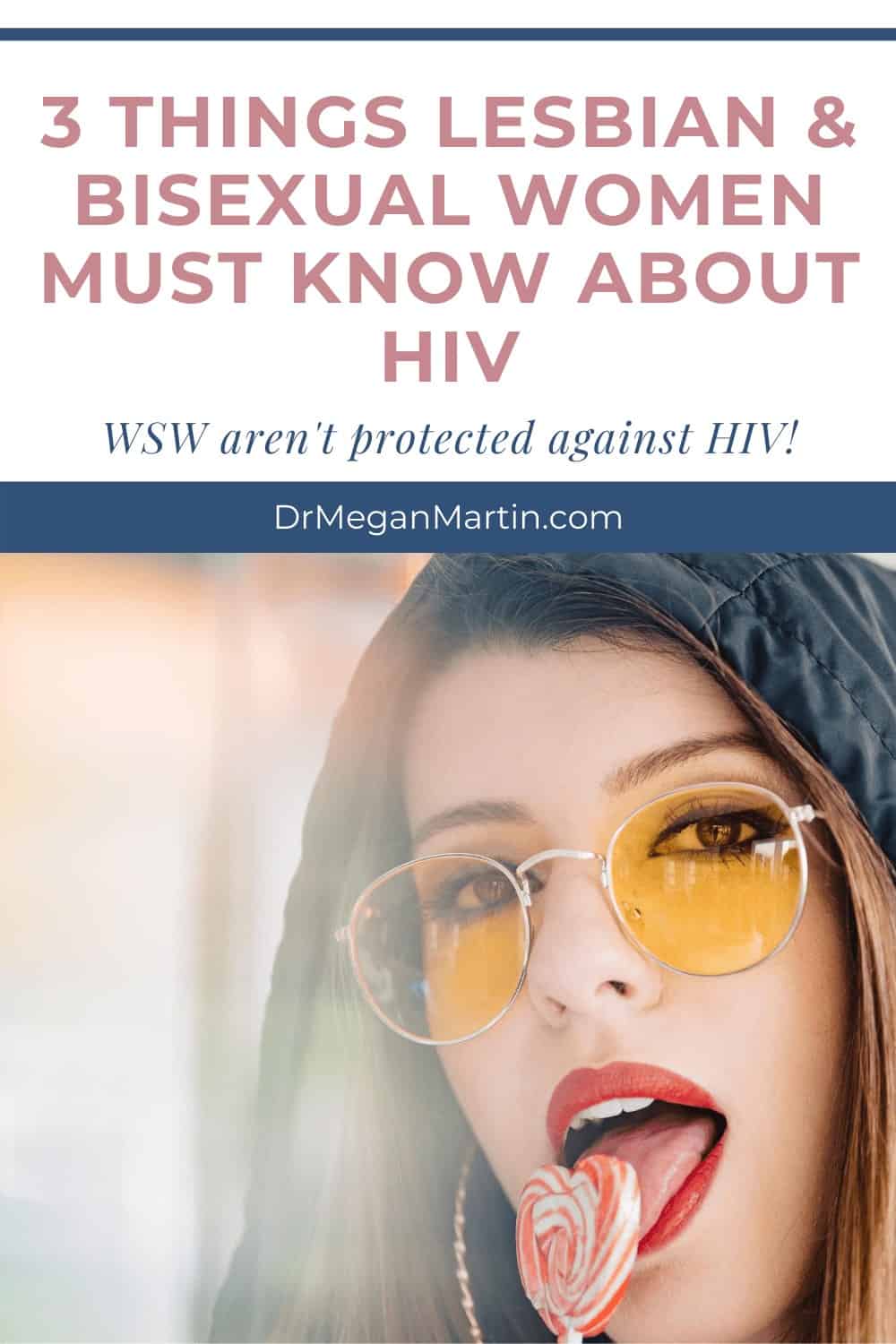HIV is probably the most feared sexually transmitted infection. This isn’t necessarily all due to the lifelong treatment and possibility of future complications. A large part of the fear is the stigma attached to being HIV positive.
This can be especially problematic in the lesbian community, as lesbians don’t often think about HIV or having to worry about it. It is often believed that HIV cannot be transmitted between two women. And if you find out that your partner is HIV positive, there is a lot of concern about where she got it from and whether she has been with a man.
But what is the truth?
We aren’t taught about this topic. HIV prevention programs tend to ignore lesbian women (or WSW) and focus on other “high risk” groups, like gay men (or MSM), IV drug users and sex workers. An entire population has been neglected and overlooked in the research.
After looking through the limited available research myself, I have come to 3 key conclusions that I would like to share with you.
*References to women, lesbians, bisexual women, WSW or people with vulvas will be used interchangeably. Remember: not all women have vulvas, and not everyone with a vulva is a woman.
1. The risk of HIV transmission between 2 people with vulvas is lower than the average population.
The risk of HIV transmission from women to women is more rare, but this doesn’t mean that it’s not impossible. HIV can be transmitted via sexual fluids (vaginal secretions, semen), blood and from mother to child.
2. Just because she says she’s a lesbian, it doesn’t mean she hasn’t had sex with a man.
Just because someone says they’re a lesbian, you cannot automatically assume that they’re at a low risk for having HIV. While sex between two women is lower risk, the risk with heterosexual sex is very high.
Lesbian women, bisexual women and any women who have sex with women (WSW), may at some point in their lives have had sex or sexual contact with a man.
This can be for a variety of reasons, both consensual and non-consensual.
3. There are a few key things to know when having sex with someone who is or may be HIV positive.
HIV Transmission is possible through sharing of sex toys.
When using sex toys, especially toys for penetration, HIV in vaginal fluids can be transferred from one partner to the other if the toy is shared. This is why it is so important that you don’t use the same sex toy on each other.
To avoid this, you can use separate toys on each other. If you only have one toy available, make sure you cover the toy with a condom.
You can then use the toy on the first partner, and when finished, remove the condom. You must then put a new condom onto the sex toy before using it on the second partner. And so forth.
Make sure you properly clean and disinfect your sex toys after sex.
HIV transmission is possible through contact with blood during sex.
Blood during sex?! Whaaat?? Yes. During sex, there can be intentional or unintentional contact with blood during sex.
This can happen when one or both partners are menstruating. Oral sex during menstruation or menstrual blood coming into contact with the other person’s vulva/vagina can transmit HIV. Don’t be too surprised. Lots of people still have sex while they’re menstruating!
And sometimes people will only find out they’re menstruating during or after sex!
Another unintentional way to come into contact with blood is when the sex gets more rough and the vagina or cervix bleeds a little from the vigorous stimulation.
Intentional contact with blood, such as during blood play in kink scenarios or IV drug use and sharing of needles is also high risk.
If you would like to know more about how to protect yourself from HIV and other sexually transmitted infections, you’re in luck! I have created a Mini eBook called The Ultimate Guide to Safe Sex for Women Who Love Women. AND I’m giving it away ABSOLUTELY FREE for a limited time only!
Inside this guide you will find everything you need to know and more! It contains all my tips and tricks that will keep sex fun AND protected.

You can get your FREE DOWNLOAD right HERE.
To recap
Lesbians and WSW are often perceived as not to be at risk for HIV because it is assumed that they only have sex with other women. But it’s important to remember that sexual identity does not directly translate to sexual behaviour. Everyone has a sexual history.
The most high risk sexual activities for the transmission of HIV among women is oral sex, sharing of sex toys and fisting. Especially if this occurs during menstruation.
The research is full of gaps when it comes to women in same sex relationships. We cannot accurately quantify how significant the risk is, but we do know that it is there. When in doubt, it is best to always be on the safe side.
Take care of yourself!






0 Comments
Trackbacks/Pingbacks